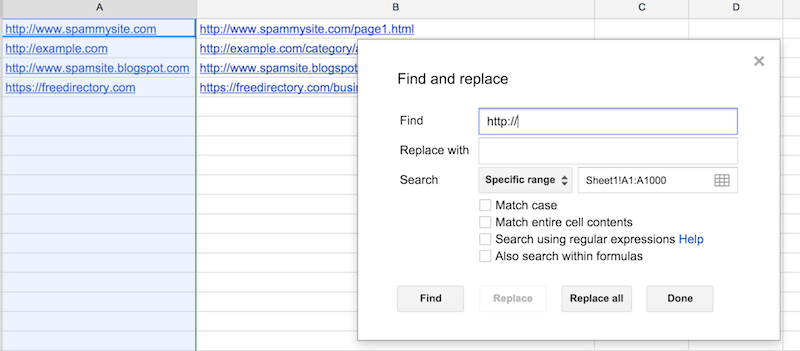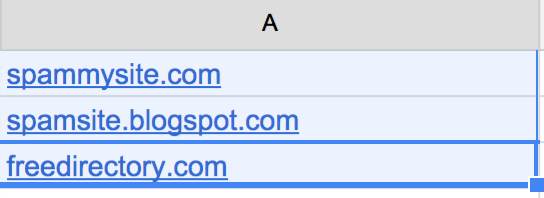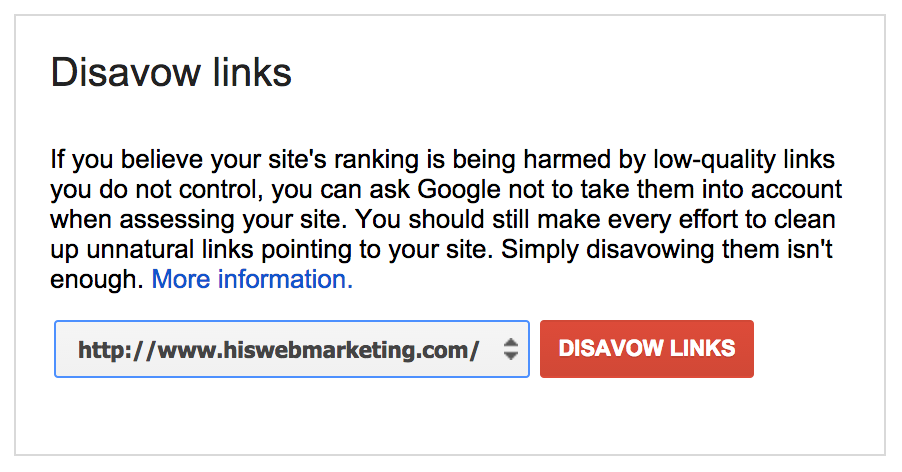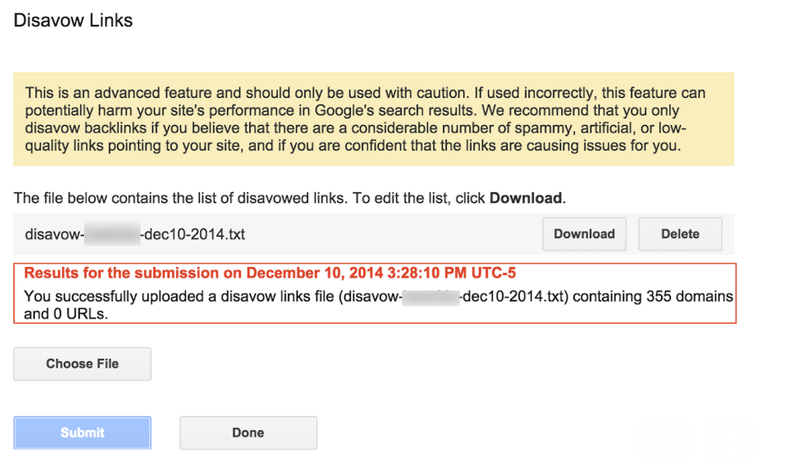Information Architecture for SEO – Whiteboard Friday
Posted by randfish
It wasn't too long ago that there was significant tension between information architects and SEOs; one group wanted to make things easier for humans, the other for search engines. That line is largely disappearing, and there are several best practices in IA that can lead to great benefits in search. In today's Whiteboard Friday, Rand explains what they are and how we can benefit from them.
For reference, here's a still of this week's whiteboard!
Video Transcription
Howdy, Moz fans, and welcome to another edition of Whiteboard Friday. This week we're going to chat a little bit about information architecture, and specifically how you can organize the content of your website in such a fashion to make information architecture help your SEO and your rankings and how search engines interpret your pages and the links between those.
I want to start by talking broadly about IA and the interaction with SEO. IA is designed to say, "Hey, we want to help web users accomplish their goals on the website quickly and easily." There are many more broad things around that, but basically that's the concept.
This actually is not in conflict at all, should almost never be in conflict, even a little bit, with the goals that we have around SEO. In the past, this was not always true, and unfortunately in the past some mythology got created around the things that we have to worry about that could conflict between SEO and information architecture.
Here we've got a page that's optimal for IA, and it's got this top navigation and left side navigation, some footers, maybe a big image at the front and some text. Great, fine. Then, we have this other version that I'm not going to call it optimal for SEO, because it's actually not optimal for SEO. It is instead SEO to the max! "At the Tacoma Dome this Sunday, Sunday, Sunday!"
The problem is this is kind of taking SEO much too far. It's no longer SEO, it's SE . . . I don't know, ridiculousness.
The idea would be things like we know that keyword rich anchors are important, and linking internally we want to be descriptive. We know that as people use those terms and links other places on the web, that might help our rankings. So instead of making the navigation obvious for users, we're going to make it keyword stuffed for SEO. This makes no sense anymore, as I'm sure, hopefully, all of you know.
Text high up on the page, this actually does mean something. It used to mean a little more than it does. So maybe we're going to take oh, yeah, we want to have that leader image right up at the top because that grabs people's attention, and the headline flows nicely into that image. But for SEO purposes, we want the text to be even higher. That doesn't make any sense either.
Even if there is some part of Google's algorithm, Bing's algorithm, or Baidu's algorithm, that says, "Oh, text higher up on the page is a teensy little spattering more meaningful," this is totally overwhelmed and dwarfed by the fact that SEO today cares a ton about engagement. If people come to this page and are less engaged, are more likely to click the Back button, are less likely to stay here and consume the content and link to it and share it and all these kinds of things, it's going to lose out even to the slightly less optimized version of the page over here, which really does grab people's attention.
If your IA folks and your usability folks and your testing is showing you that that leader image up top there is grabbing people's attention and is working, don't break it by saying, "Oh, but SEO demands content higher on the page."
Likewise, if you have something where you say, "Hey, in order to flow or sculpt the link equity around these things, we don't want to link to this page and this page. We do want to link to these things. We want make sure that we've got a very keyword heavy and link heavy footer so that we can point to all the places we need to point to, even though they're not really for users. It's mostly for engines. Also, BS. One of the things that modern engines are doing is they're kind of looking and saying, "Hey, if no one uses these links to navigate internally on a site, we're not going to take them into consideration from a ranking perspective either."
They have lots of modeling and machine learning and algorithmic ways to do that, but basic story is make links for users that search engines will also care about, because that's the only thing that search engines really do want to care about. So IA and SEO, shouldn't be in conflict.
Important information architecture best practices
Now that we know this, we can move on to some important IA best practices, generally speaking IA best practices that are also SEO best practices and that most of the time, 99.99% of the time work really well together.
1. Broad-to-narrow organization
The first one, in general, it's the case that you want to do broad to narrow organization of your content. I'll show you what I mean.
Let's say that I've got a website about adorable animals, a particularly fun one this week, and on my adorable animals page I've got some subsections, sub-pages, one on the slow loris, which of course is super adorable, and hedgehogs, also super adorable. Then getting even more detailed from there, I have particular pages on hedgehogs in military uniforms -- that page is probably going to bring down the Internet because it will be so popular -- and hedgehogs wearing ridiculous hats. These are two sub-pages of my hedgehog page. My hedgehog page, subset of my adorable animals page.
This is generally speaking how I want to do things. I probably would not want to organize, at least from the top level down in my actual architecture for my site, I probably wouldn't want to say adorable animals and here's a list of hedgehogs in military uniforms, a list of hedgehogs wearing ridiculous hats, a list of slow loris licking itself. No. I want to have that organization of broad to more narrow to more narrow.
This makes general sense. By the way, for SEO purposes it does help if I link back and forth one level in each case. So for my hedgehog page, I do want to link down to my hedgehogs in military uniforms page, and I also want to link up to my adorable animals page.
You don't have to do it with exactly these keyword anchor text phrases, that kind of stuff. Just make sure that you are linking. If you want, you can use breadcrumbs. Breadcrumbs are very kind of old-fashioned, been around since the late '90s, sort of style system for showing off links, and that can work really well for some websites. It doesn't have to be the only way things can work though.
2. Link to evergreen pages from fresh content
When you're publishing fresh content is when I think many SEOs get into a lot of trouble. They're like, "Well, I have a blog that does all this, but then I have the regular parts of my site that have all of my content or my product pages or my detailed descriptions. How do I make these two things work together?"
This has actually become much easier but different in the last five or six years. It used to be the case that we would talk, in the SEO world, about not having keyword cannibalization, meaning if I've got an adorable animals page in my main section of my website, I don't actually want to publish a blog post called "New Adorable Animals to Add to My Collection," because now I'm competing with myself and I'm diluting my link juice.
Actually, this has gotten way easier. Google, and Bing as well, have become much more intelligent about identifying what's new content, what's old, sort of evergreen content, and they'll promote one. You even sometimes have an opportunity to get both in there. Certainly if you're posting fresh content that gets into Google news, the blog or the news section can be an opportunity to get in Google news. The old one can be an opportunity to just stay in the search results for a long time period. Get ting links to one doesn't actually dilute your ranking ability for the other because of how Google is doing much more topic focused associations around entire websites.
So this can be actually a really good thing. However, that being said, you do still want to try and link back to the most relevant, evergreen kind of original page. If I publish a new blog post that has some aggregation of hedgehogs in military uniforms from the Swiss Naval Academy -- I don't know why Switzerland would have a navy since they're landlocked -- I would probably want to take that hedgehogs in Swiss military uniforms and link back to my original one here.
I wouldn't necessarily want to do the same thing and link over here, unless I decide, hey, a lot of people who are interested in this are going to want to check out this article too, in which case it's fine to do that.
I would worry a little bit that sometimes people bias to quantity over quality of links internally when they're publishing their blog content or publishing these detail pages and they think, "Oh, I need to link to everything that's possibly relevant." I wouldn't do that. I would actually link to the things that you are most certain that a high number, a high percent of the users who are enjoying or visiting or consuming one page, one piece of information are really going to want in their journey. If you don't have that confidence, I wouldn't necessarily put them in there. I wouldn't try and stack those up with tons of extra links.
Like I said, you don't need to worry about keyword cannibalization. If you want to publish a new article every week about hedgehogs in military uniforms, you go for it. That's a great blog.
3. Make sub-pages if intent is unique, combine if not
Number three, and the last one here, make these sub-pages when there's unique intent. Information architecture is actually really good about this in practice. They basically say, "Hey, why would we create a new page if we already have a page that serves the same goals and same intent?" One of the reasons that people used to say, "Well, I know that we have that, but it doesn't do a great job of targeting phrase A and phrase B, which both have the same intent but aren't going to rank for those two separate phrases A and B."
That's also not the case anymore in the SEO world. Google and Bing have both become incredibly good at sorting out searcher intent and matching those to the pages and the keywords that fit those intents, even if the keyword match isn't perfect one-to-one exact.
So if I've got a page that's on slow lorises yawning and another one on slow lorises that are sleepy, are those really all that different? Is the intent of the searcher very different? When someone is searching for a sleepy loris, are they looking for one that's probably yawning? Yeah. You know what? I would say these are the same intent. I would make a single page for them.
However, over here I've got a slow loris in a sombrero and a slow loris wearing a top hat. Now, these are two very different kinds of head wear, and people who are searching for sombreros are not going to want to find a slow loris wearing a top hat. They might want to see a cross link over between them. They might say, "Oh, top hat wearing slow lorises are also interesting to me." But this is very specific intent, different from this one. Two different intents means two different pages.
That's how I do all of my information architecture when it comes to a keyword and SEO perspective. You want to go broad to narrow. You want to not worry too much about publishing fresh content, but you do want to link back to the original evergreen. You want to make sure that if there are pages or intents that are exactly the same, you make a single page. If they're intents that are different, you have different pages targeting those different intents.
All right everyone, look forward to the comments, and we'll see you again next week for another edition of Whiteboard Friday. Take care.
Video transcription by Speechpad.com
Sign up for The Moz Top 10, a semimonthly mailer updating you on the top ten hottest pieces of SEO news, tips, and rad links uncovered by the Moz team. Think of it as your exclusive digest of stuff you don't have time to hunt down but want to read!





 The latest trend with publishers like BuzzFeed and Huffington Post is listicle posts that round up the funniest/saddest/most absurd stories from different threads on Reddit or other forums. Editors read through a thread and select what they deem to be the 10+ best posts under that topic, and publish the list either as is or including new images and light commentary. BuzzFeed has also taken this a step further and created posts that are simply open-ended questions people can answer for the chance to be featured in a follow-up post that includes the top answers.
The latest trend with publishers like BuzzFeed and Huffington Post is listicle posts that round up the funniest/saddest/most absurd stories from different threads on Reddit or other forums. Editors read through a thread and select what they deem to be the 10+ best posts under that topic, and publish the list either as is or including new images and light commentary. BuzzFeed has also taken this a step further and created posts that are simply open-ended questions people can answer for the chance to be featured in a follow-up post that includes the top answers.































Get Social